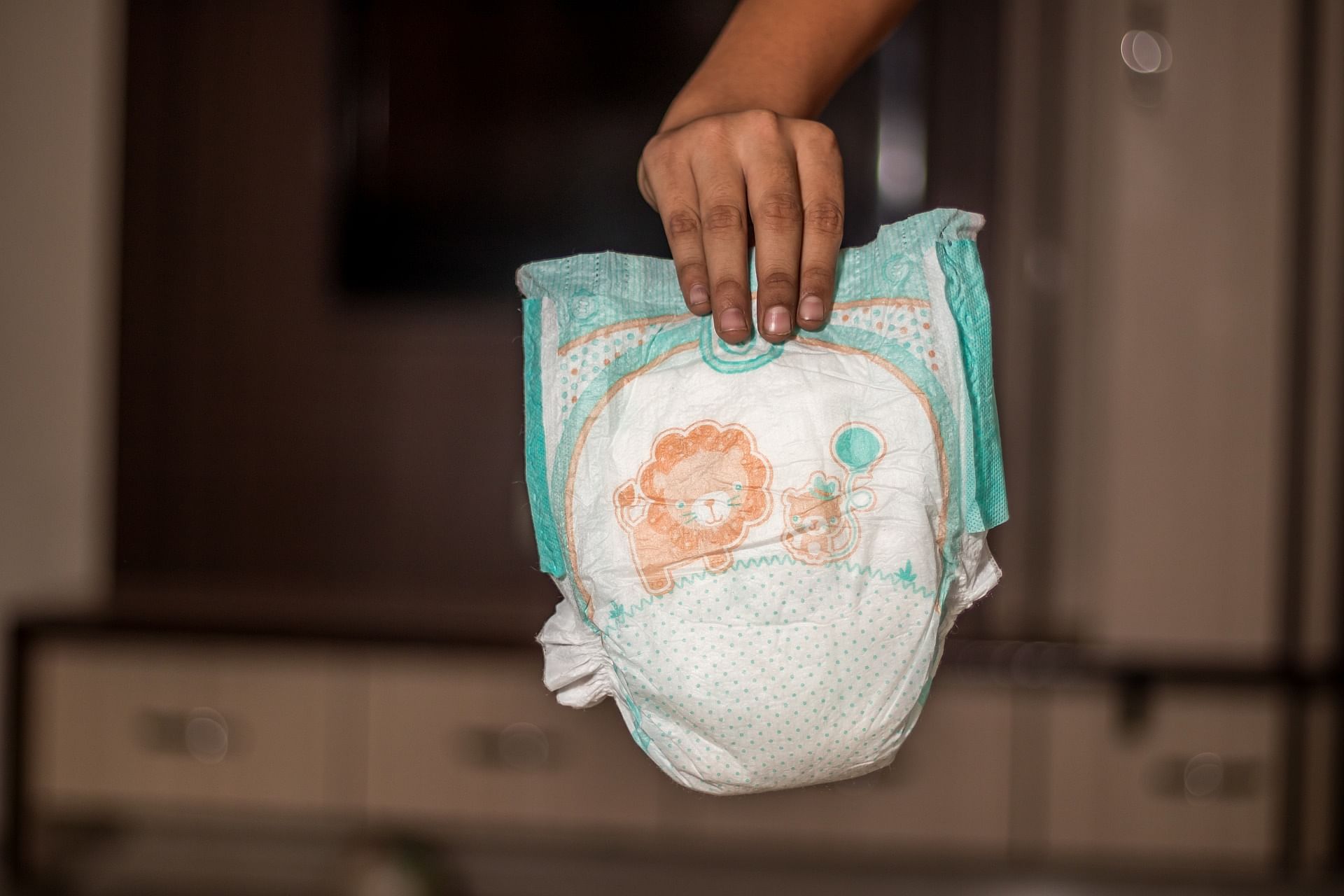Garbage disposal in Bengaluru city is one of the greatest challenges and a looming silent epidemic. With the constant increase in waste production and ever-dwindling landfill spaces, disposable baby diapers are adding to this menace and their contribution to the garbage crisis is often going unrecognised!
Disposal baby diapers have almost become indispensable in the list of baby care products and their use has been increasing steadily over the years and is becoming more of a burden, rather than a convenience to the corporation and other government authorities who are burdened with the task of garbage disposal.
Dioxin, sodium, polyacrylate, dyes, fragrances, plastics, toluene, xylene, ethylbenzene and di-pentene chemicals are used to manufacture a diaper. Dioxin is a bleaching agent which causes nerve damage, miscarriage and damage to the immune system as per animal studies. Sodium polyacrylate which is an absorbent gelling material (AGM) is linked to toxic shock syndrome allergies in pets. The temperature around the genitals of baby boys is significantly higher compared to cloth diapers and could lead to decreased sperm count when they reach adulthood.
Disposable diapers have a great impact on ozone depletion due to the increase of CFC’s as they decompose in the landfill. These diapers need to be exposed to oxygen and sunlight to decompose. They do not degrade well in a landfill and take more than 500 years to decompose.
Millions of tons, of untreated waste added to landfills each year through plastic diapers can contaminate ground-water. Their super-absorbent quality absorbs a lot of water too, in turn depleting ground-water.
The present diapers in landfill can encircle the globe 90 times. A simple estimate, one month old baby would need 8-12 diapers per day— that is 240 to 360 per month. The soiled diapers have two destinations, they either find their way to disposal sites and landfills mixed with regular daily household waste or they litter public spaces where they are an aesthetic nuisance, where dogs, rats and bandicoots drag them around leading to many health hazards.
It is interesting to note that use of disposable diapers decreases the incidence of probable sepsis in babies admitted to neonatal intensive care units (NICU). In a tertiary care unit with a bed capacity of 35, the daily diaper burden is 25kgs (750kgs/month), and they become medical waste.
Infants at home who are made to use a diaper— becomes general waste and their disposal is a big menace and environmental hazard. Many poor mothers who got their first exposure to disposable diapers in a hospital setting, continue to use them at home and they try to save money by using one diaper per day, instead of 8-12 diapers which again contributes to health hazards of the young infant.
Perhaps we need to have a separate bin just like wet waste and dry waste disposal for disposing baby, adult diapers and sanitary pads. In addition to which, other different mechanisms for their disposal also need to be thought.
The disposable diapers can be shred into small pieces after the separation of the plastic from pulp like filter material. The shredded material is then washed in a solution comprising waste containing various ecologically safe cleaning agents as well as calcium chloride and salt to neutralise the acrelites in the pulp like material. The shredded material is then washed in washer comprising a perforated cylinder drum which spins and forces the slurry through the perforation while retaining the plastic material.
The slurry like material containing pulp in the dehydrated material can be sold for recycling.
These days adult diapers are making headlines as necessary accessories among certain sections of the society like pilots, astronauts, sick, aged and bedridden patients. Their disposal and segregation at the point of generation should be displayed pictorially on the diaper packet and collection bins. There should be a clear depiction of the category which the waste will belong to— general, infected or recyclable waste.
Hence the need for different collection bins and different methods of disposal. Convenience and hygiene come with a price tag for disposal and eroding the already stressed environment. Should we look at alternatives like plastic-free, eco-friendly chemical-free diapers with a built-in system of disposal at point of generation? Or settle down to our conventional cloth diapers with new innovations for making it them more hygienic?
(The writer is a teacher in paediatrics for more than three decades)
